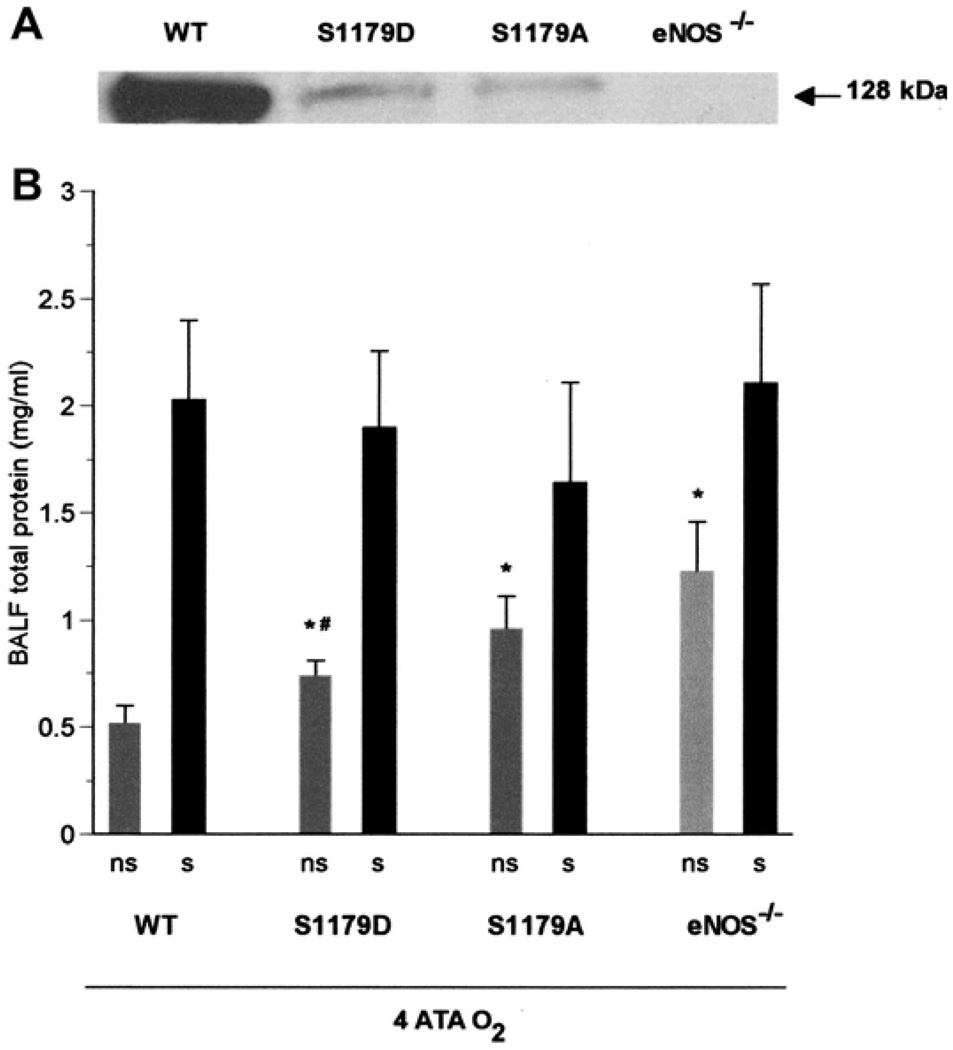Fig. 5.
Tolerance to pulmonary oxygen toxicity varies with eNOS activity. A: Western blot analysis of lung protein, using antibody specific to WT eNOS, shows decreasing order of eNOS protein expression from WT through S1179D and S1179A to eNOS−/− mice. B: after exposure to 4 ATA seizure-free (ns) eNOS−/− mice (n = 8), and both groups of transgenic mice had the most severe pulmonary damage in HBO2, as indicated by BALF total protein compared with WT mice (*P < 0.05 vs. WT, ns). Seizure-free S1179A transgenic mice (n = 6), in which eNOS could not be activated by phosphorylation, had less injury than seizure-free eNOS knockouts, but this difference was not statistically significant. By contrast, seizure-free S1179D transgenic mice with phosphomimetic eNOS (n = 5) had significantly less injury than eNOS−/− mice. #P < 0.05 vs. eNOS−/−, ns. All mice with seizures (s), including WT and both transgenic strains (7 WT, 5 eNOS−/−, 6 S1179A, and 7 S1179D), show similarly large increases in total protein, suggesting that CNS-mediated convulsions exacerbate pulmonary damage in HBO2.

